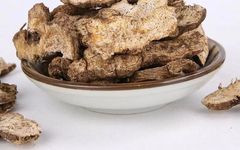Expert Insights
Cang Zhu (Atractylodes)
Traditional Chinese Medicine University
Essential Knowledge You Should Know
About Chinese Herbs
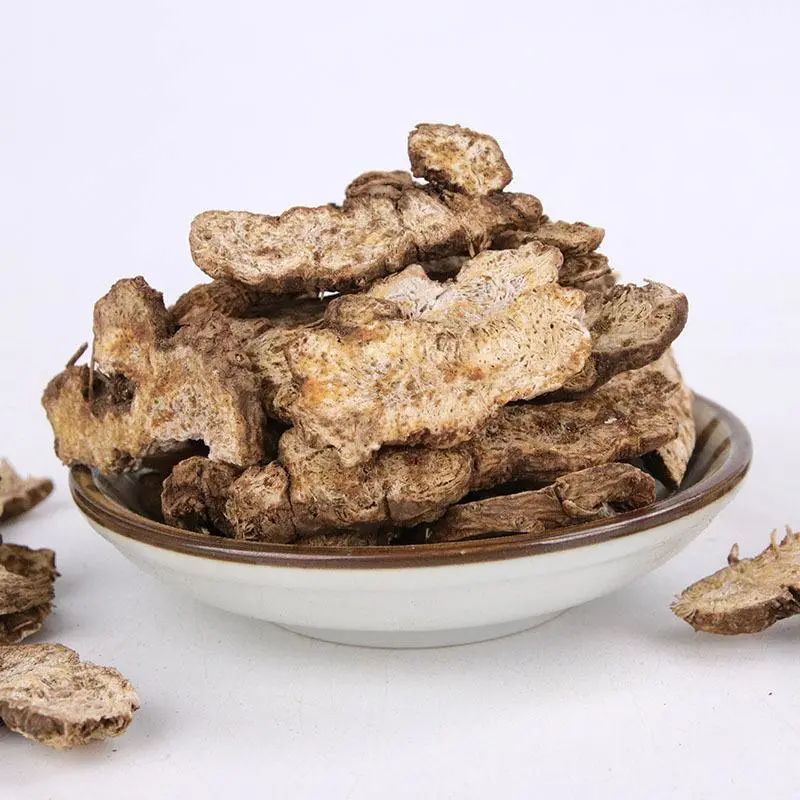
Some formulas use Bai Zhu (White Atractylodes), while others use Cang Zhu; the same formula may be prepared by different doctors using either Bai Zhu or Cang Zhu. In ancient times, Cang Zhu and Bai Zhu were not differentiated. The Shen Nong Ben Cao Jing (Shen Nong’s Classic of Materia Medica) only mentions “Zhu” without distinguishing between Cang and Bai. It was during the Wei, Jin, and Northern and Southern Dynasties that Tao Hongjing classified them into Bai and Chi (Red) based on their morphology, properties, and uses, but their functions remained undifferentiated, collectively referred to as Zhu. It was not until the Song Dynasty that Kou Zongshi in Ben Cao Yan Yi clearly distinguished between Cang Zhu and Bai Zhu. So, what are the functions of Cang Zhu?
Chinese Herbal Knowledge
Source

Cang Zhu is the dried rhizome of the perennial herbaceous plant Atractylodes lancea or Atractylodes macrocephala, primarily produced in Jiangsu, Hubei, and Henan provinces, with the highest quality coming from the Maoshan area in Jiangsu, hence the name Maocang Zhu. The latter is mainly produced in Inner Mongolia, Shanxi, and Liaoning. It is harvested in spring and autumn, dried, and sliced for use either raw, stir-fried with bran, or stir-fried with rice wash.
Properties
Pungent, bitter, warm. It enters the Spleen, Stomach, and Liver meridians.
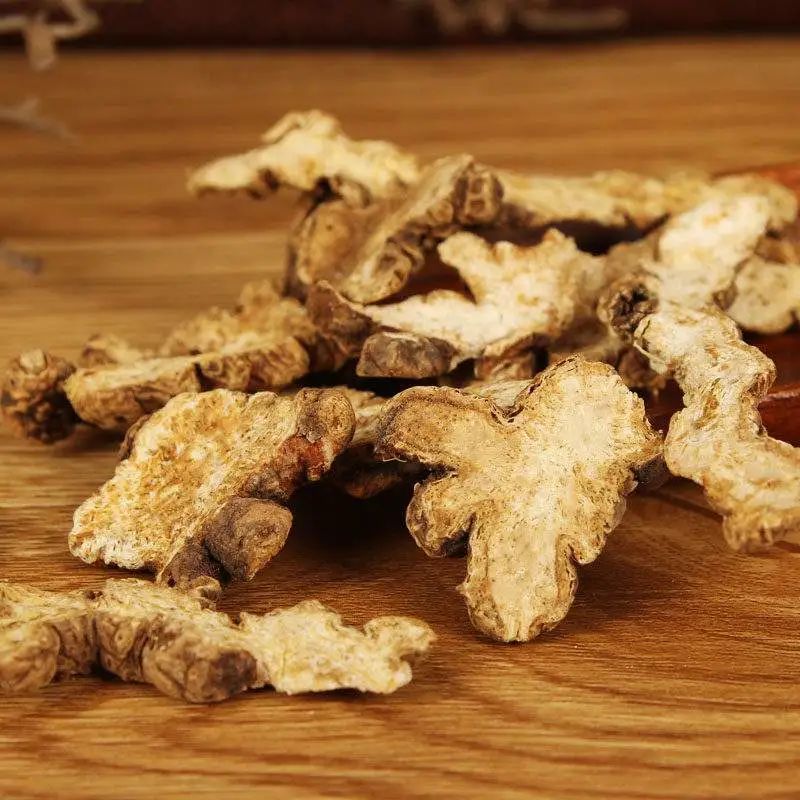
Functions
Dries dampness and strengthens the Spleen,
Expels wind and disperses cold.
Dosage
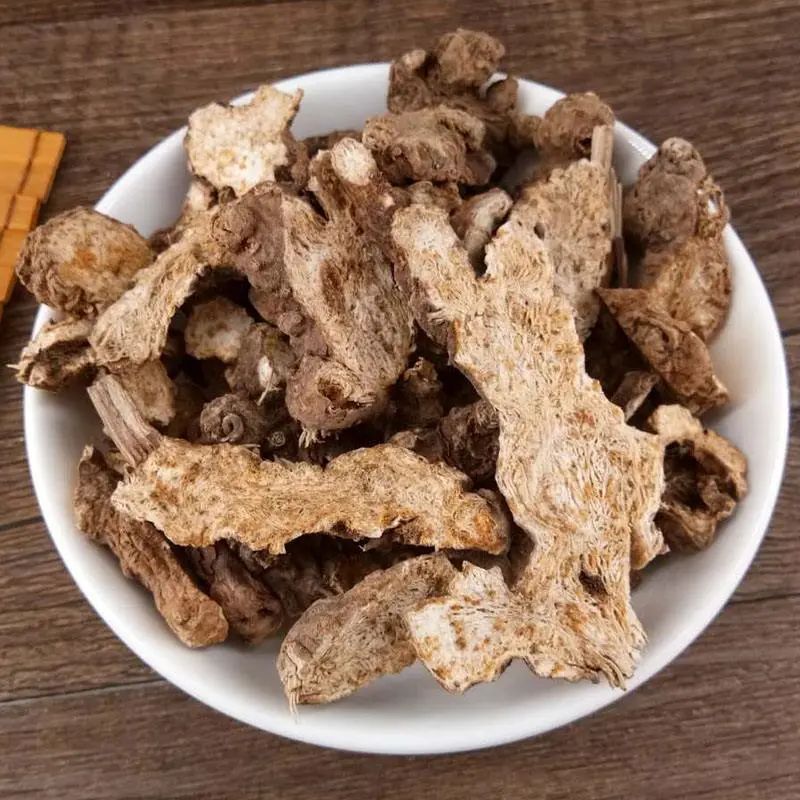
Decocted for oral administration, 5-10g.
Precautions
Contraindicated in cases of Yin deficiency with internal heat and Qi deficiency with excessive sweating.
Summary from Ancient Texts
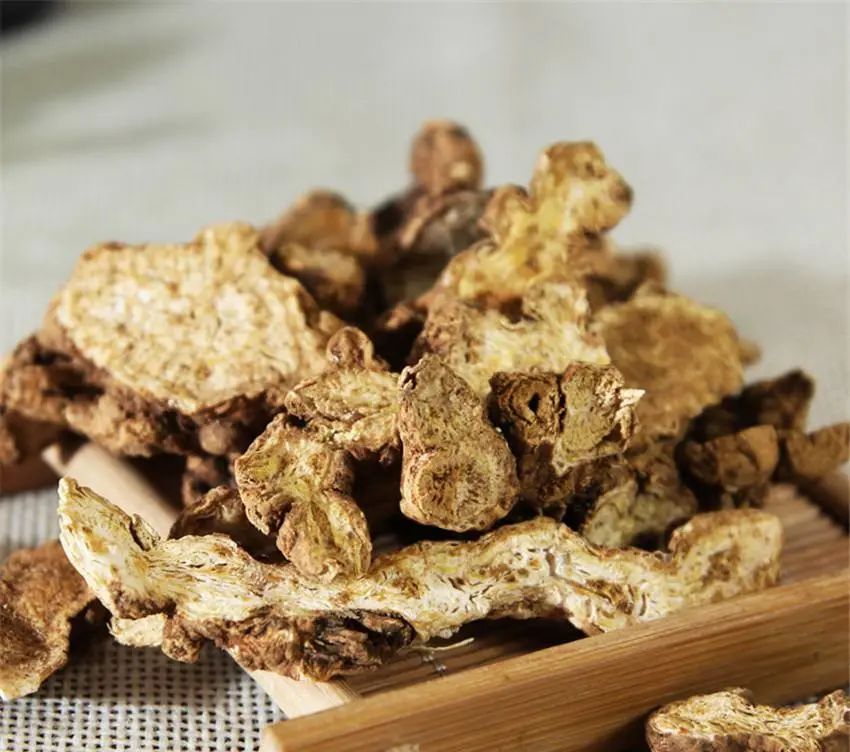
Shen Nong Ben Cao Jing: “It is used for wind, cold, dampness, and muscle spasms. Long-term consumption can lighten the body and prolong life without hunger.”
Ming Yi Bie Lu: “It is used for headaches, phlegm, and water retention, expelling wind and water swelling, relieving fullness under the heart, and treating cholera with persistent vomiting and diarrhea, warming the stomach and promoting appetite.”
Ben Cao Gang Mu: “It treats damp phlegm retention… Spleen dampness leading to turbid discharge, and slippery bowel wind.”
Clinical Applications
Damp obstruction in the Middle Jiao
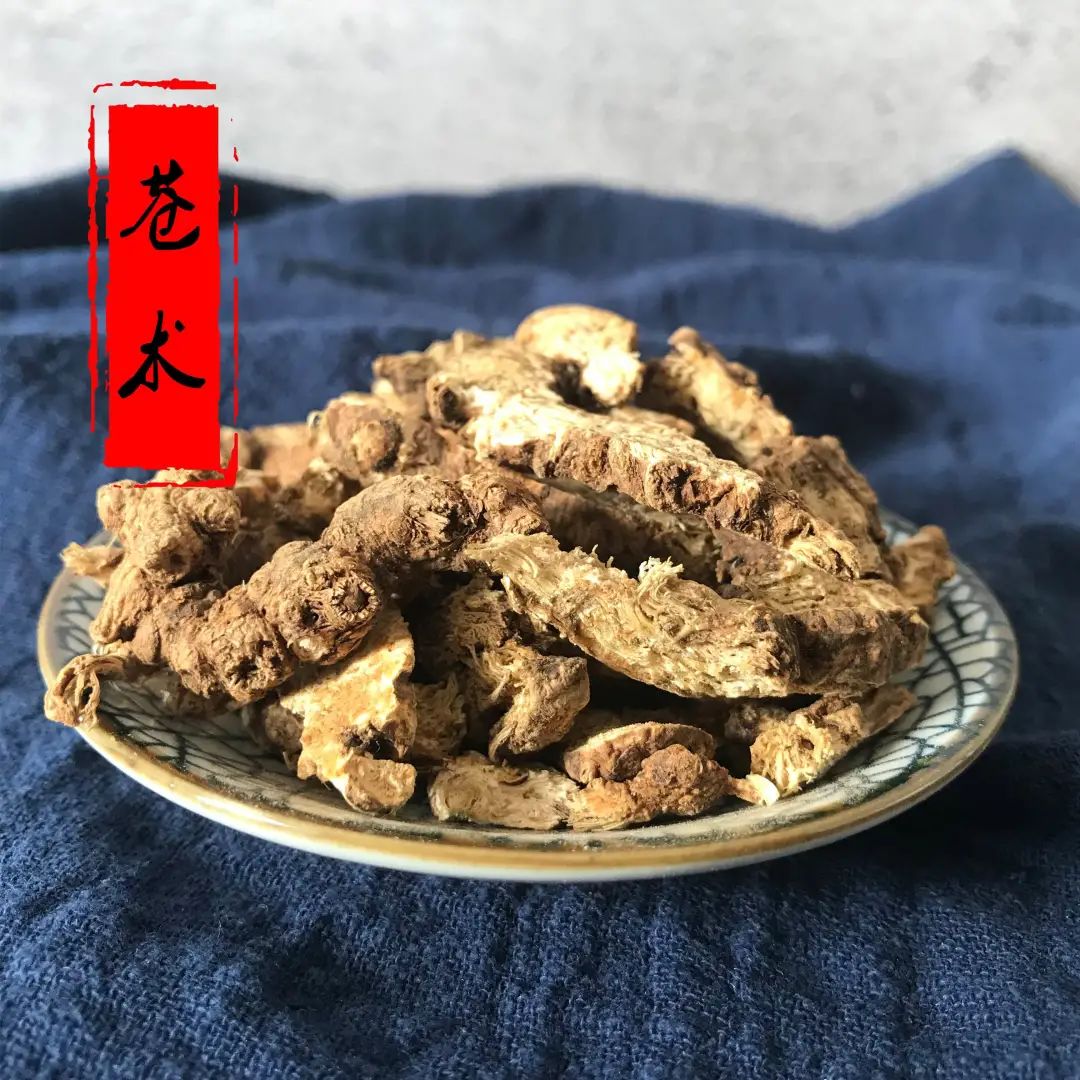
This herb is bitter and warm, drying dampness to expel turbid fluids, and pungent and aromatic to strengthen the Spleen and harmonize the Spleen and Stomach. It is particularly suitable for symptoms of damp obstruction in the Middle Jiao, such as abdominal distension, nausea, poor appetite, vomiting, diarrhea, fatigue, and a white greasy tongue coating. It is often combined with Hou Po (Magnolia Bark) and Chen Pi (Aged Tangerine Peel) in formulas like Ping Wei San. If there is Spleen deficiency with damp accumulation, or water retention with phlegm, it can be used with Fu Ling (Poria), Ze Xie (Alisma), and Zhu Ling (Polyporus) in formulas like Wei Ling Tang. In cases of damp-heat or summer-dampness, it can be combined with heat-clearing and damp-drying herbs.
Wind-damp Bi syndrome
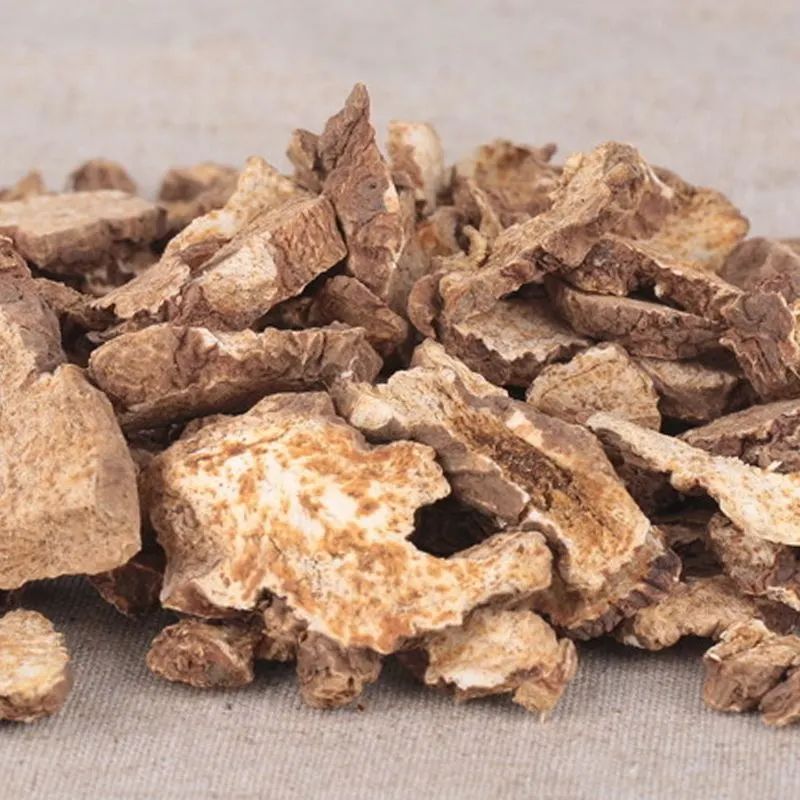
This herb is pungent and drying, excelling at expelling dampness, thus it is particularly suitable for Bi syndrome with damp predominance. It can be used with Yi Yi Ren (Job’s Tears) and Du Huo (Angelica Pubescens) in formulas like Yi Yi Ren Tang. If there is damp-heat causing pain, it can be combined with Shi Gao (Gypsum) and Zhi Mu (Anemarrhena) to clear heat and drain fire, such as Bai Hu Jia Cang Zhu Tang, or with Huang Bai (Phellodendron), Yi Yi Ren, and Niu Xi (Achyranthes) for damp-heat atrophy syndrome, known as Si Miao San. If combined with Long Dan Cao (Gentiana), Huang Qin (Scutellaria), and Zhi Zi (Gardenia), it can treat lower body dampness, damp sores, and eczema.
Wind-cold with damp exterior syndrome
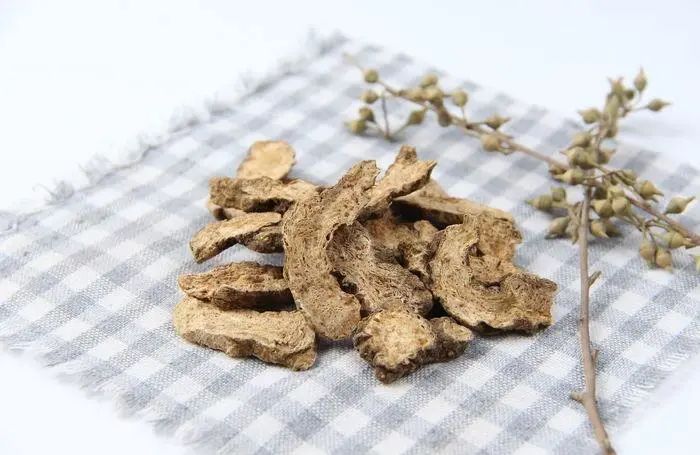
This herb is pungent and aromatic, capable of opening the pores to induce sweating, expelling wind-cold from the exterior. It is particularly suitable for cases of wind-cold with dampness. It is often used with Qiang Huo (Notopterygium), Bai Zhi (Angelica Dahurica), and Fang Feng (Saposhnikovia) in formulas like Shen Zhu San. Additionally, this herb can also improve vision, used for night blindness and blurred vision. It can be used alone or cooked with lamb liver or pig liver.
Modern Research
Chemical
Components
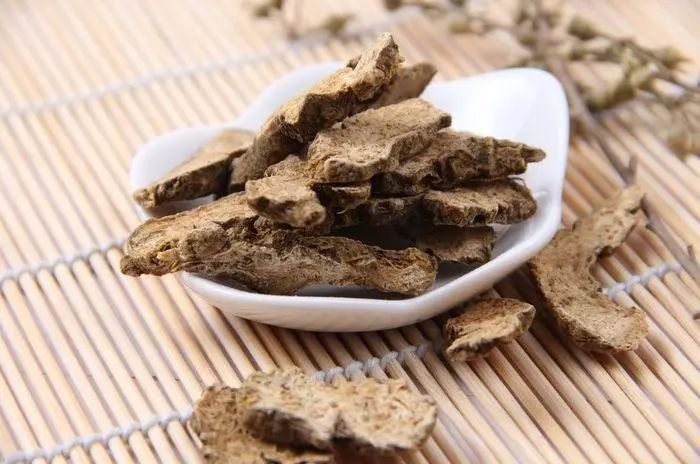
It mainly contains volatile oils, primarily composed of caryophyllene (a mixture of β-eudesmol and Atractylon). It also contains small amounts of atractylone, vitamin A-like substances, vitamin B, and inulin.
Pharmacological
Effects
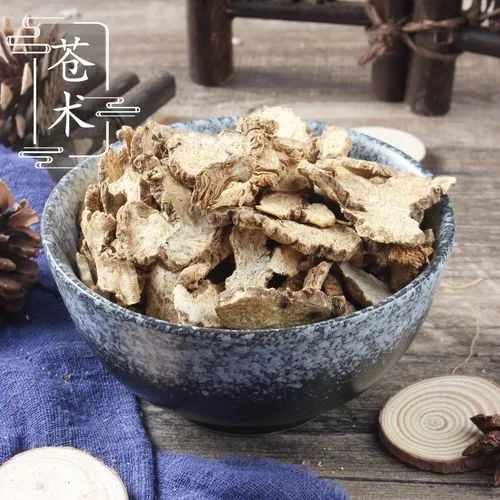
The volatile oil has a significant effect against intestinal spasms induced by the parasympathetic neurotransmitter acetylcholine; it promotes the recovery of adrenal suppression caused by sympathetic neurotransmitter adrenaline. Atractylodes preparations can enhance gastrointestinal motility and have a slight contraction effect on gastric smooth muscle. The volatile oil has a sedative effect on the central nervous system at low doses, while at high doses, it exhibits an inhibitory effect. Atractylodes decoction has a hypoglycemic effect and promotes sodium and potassium excretion; its vitamin A-like substances can treat night blindness and keratomalacia.
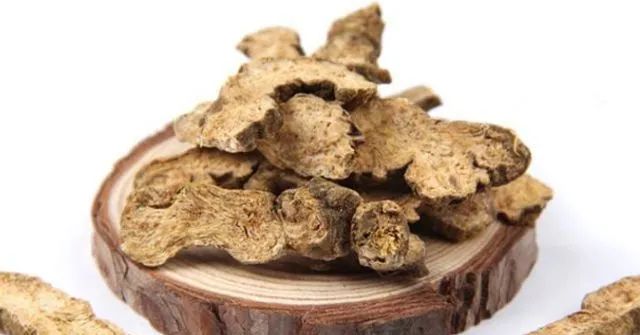
Cang Zhu is also one of the damp-drying herbs. Also known as Chi Zhu (Red Atractylodes), Shan Jing (Mountain Essence), Xian Zhu (Immortal Zhu), and Shan Ji (Mountain Thistle), it has a pungent and bitter taste, and a warm nature, capable of drying dampness and strengthening the Spleen, as well as improving vision (treating night blindness). Bai Zhu and Cang Zhu were historically referred to collectively as “Zhu”; later, they were differentiated for medicinal use, both capable of strengthening the Spleen and drying dampness, with Bai Zhu primarily focusing on strengthening Qi, while Cang Zhu emphasizes drying dampness. According to Li Shizhen in Ben Cao Gang Mu: “(Cang Zhu) should not be used together with Bai Zhu.”
END
If you find this article useful, please share it so more people can see it!

Click below to leave comments or submit articles

If you like it, give me a little red flower
🌺

Share, view, and like, at least I want to have one




